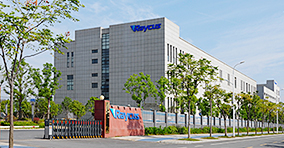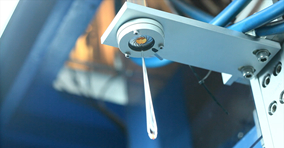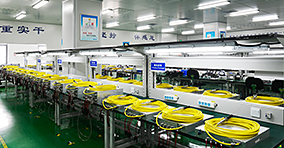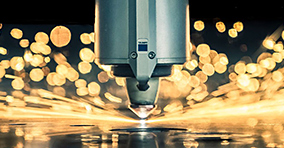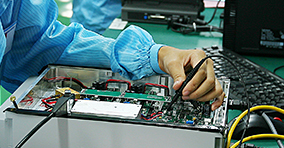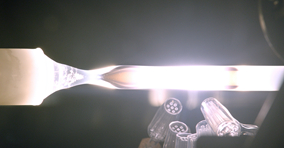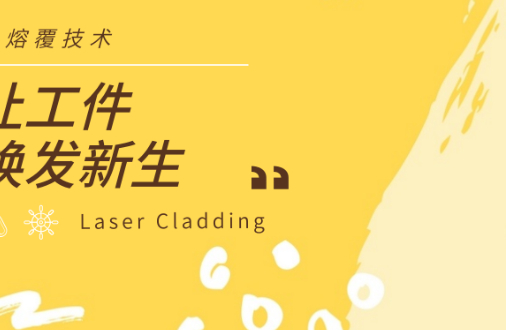Introduction to ultra-high-speed laser cladding
Friends of the first article
[Rayclass | Rui Class] Issue 2: Ultra-high-speed laser cladding-innovation of green remanufacturing process
Recently, many people have left messages asking
Question
Question
Take you to the laser cladding processing site
Take you to witness laser cladding
Equipment and parts in petrochemical industry
The magic of manufacturing and remanufacturing
Talk now
However, cladding equipment using carbon dioxide lasers is not the best choice for laser metal cladding processes.
(1) Equipment purchase, operation, and maintenance costs are relatively high . Frequent replacement of vulnerable parts is expensive and expensive;
(2) The equipment is bulky and is not suitable for on-site repair and use with various cladding tools;
(3) The carbon dioxide laser heat-affected zone is extremely high, and the rate of thermal deformation of the cladding parts is high . It is necessary to perform complex thermal insulation treatment on the cladding parts during and after the cladding process.
But YAG laser also has obvious shortcomings-low electro-optical conversion rate, small output power, low cladding efficiency, not suitable for large components , large area cladding, suitable for repairing thin-walled parts, small parts, and highly deformable parts .
However, direct output semiconductor lasers also have their own disadvantages when applied to cladding:
(1) Beam shaping is difficult, and it is difficult to shape the laser output spot to a very small size, so it is not suitable for cladding of thin-walled, small, high-precision and easily deformed parts ;
(2) Directly facing the cladding substrate, the thermal radiation from the molten pool of the substrate will cause great damage to the laser light emitting bar, which cannot meet the long-term processing application .
Cannot meet both large and precision devices
Processing needs?
Still need long-term continuous processing applications?
since
The above three lasers are used in cladding applications
Each has its own disadvantages
Is there a laser
Able to solve these existing
The cladding function is insufficient
√ The laser beam is transmitted through the optical fiber, and the spot power density is evenly distributed. The laser cladding molten pool has low splashing, the cladding layer is delicate , and there is no air eye;
√ fiber propagation distance long, with a variety of cladding tooling, robot used in conjunction ;
√ The laser is transmitted through the optical fiber, which solves the problem that the optical radiation of the molten pool causes damage to the laser;
√Small size, light weight, simple operation, maintenance-free, the price is equivalent to the price of direct output semiconductor laser.
Laser cladding processing technology has a wide range of applications and fields of application, covering almost the entire machinery manufacturing industry, including mining machinery, petrochemicals, power, railways, automobiles, ships, metallurgy, medical equipment, aviation, machine tools, power generation, printing, Packaging, mold, pharmaceutical and other industries.
The modern petrochemical industry basically adopts a continuous mass production mode. During the production process, the machine works in a harsh environment for a long time, resulting in damage, corrosion and wear of the components in the equipment. Often the parts that have problems include valves. , Pumps, impellers, journals of large rotors, disks, bushings, bushes, etc., and these components are very expensive, most of them have complex shapes, and it is difficult to repair them.
Among them, the wear of hydraulic rods occurs from time to time in equipment management and maintenance of industrial enterprises: strains, scratches, and fatigue wear are common.
Traditional repair processes include: repair welding, brazing, gas shielded welding, electroplating and spray coating.
However, the above traditional repair process will have uneven heating and unsatisfactory repair results; low bonding force and easy to fall off; porous welding layer, rough surface; unenvironmental protection, large environmental pollution and other problems, it is easy to re-wear after repair and cause The occurrence of oil leakage.
And reduce maintenance costs?
Take you into the laser cladding processing site
How effective is the cladding effect?
Let’s take a closer look
In addition to remanufacturing and repairing of hydraulic rods in the petrochemical industry using laser cladding, construction machinery (hydraulic rods, hydraulic cylinders), mining machinery, industrial machinery (screws, screws, shaft rollers, etc.), valves and other industries, such as various types Wear-resistant spray welding of valve sealing surfaces (conventional disc valve, ball valve, gate valve, globe valve, check valve, safety valve, valve ring, valve seat, etc.), and the wear of petroleum drill rods, bearings, shafts, rolls In areas such as repair, laser cladding can play its magical role in manufacturing and remanufacturing.


